Inflation, aid cuts driving greater need for food aid in region
| Published: 09-14-2023 10:42 AM |
Back in April, the Food Bank of Western Massachusetts distributed 1 million pounds of food to its 172 food pantries and meal sites, a sizable increase from the 750,000 pounds of food that went to the same locations just two months earlier.
While the 94,062 individuals served in April was short of the 103,049 individuals who depended on the food assistance network in August 2022, the 14% increase from 82,279 individuals served in February gives a hint at the uptick that has likely continued this spring and summer, showing that food insecurity remains a challenge. Some 9.2% of residents in the state’s four westernmost counties, or 76,253 people, are considered food insecure.
“We believe the need is always greater than what can be provided through the food assistance network,” said Food Bank Executive Director Andrew Morehouse.
One issue has been fewer donations from local farmers, a direct impact of the wet weather and flooding that has taken a toll on agriculture. “Farmers are grappling with just trying to make ends meet,” Morehouse said.
On the demand side, a convergence of reasons have likely caused the need to grow again, like in March when people were concerned over losing a COVID-era bonus for Supplemental Nutrition Assistance Program benefits.
“There are so many factors that have placed people in and out of greater need,” said Northampton Survival Center Executive Director Heidi Nortonsmith.
Lev BenEzra, executive director of the Amherst Survival Center, pointed to a general theme of high costs for basic essentials and the end of COVID safety net programs.
“The simplest answer to this question is a combination of the rising cost of basic essentials and the end of pandemic safety nets such as the child tax credit, the eviction moratorium, and COVID SNAP,” BenEzra said. “Food costs have risen even more dramatically than the already very high levels of inflation all of us are seeing, and wages, especially in lower-wage jobs, simply aren’t keeping pace.”
Article continues after...
Yesterday's Most Read Articles
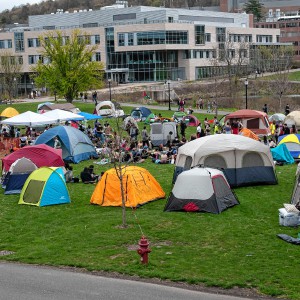 Pro-Palestinian protesters set up encampment at UMass flagship, joining growing national movement
Pro-Palestinian protesters set up encampment at UMass flagship, joining growing national movement
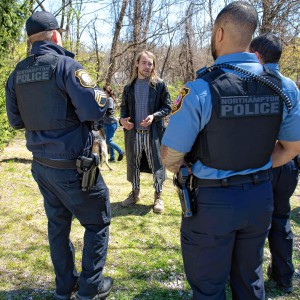 Homeless camp in Northampton ordered to disperse
Homeless camp in Northampton ordered to disperse
 Authorities ID victim in Greenfield slaying
Authorities ID victim in Greenfield slaying
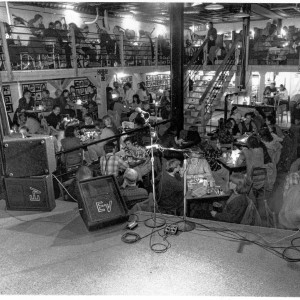 The Iron Horse rides again: The storied Northampton club will reopen at last, May 15
The Iron Horse rides again: The storied Northampton club will reopen at last, May 15
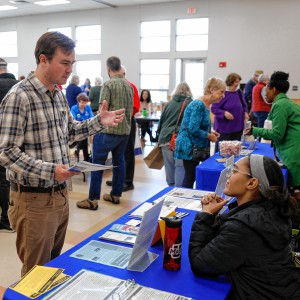 Filling the need: Volunteer Fair returns, giving those seeking to donate their time a chance to see what’s out there
Filling the need: Volunteer Fair returns, giving those seeking to donate their time a chance to see what’s out there
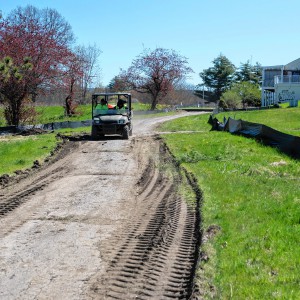 Amherst officials outline vision for Hickory Ridge: fire station, community center, affordable housing among options
Amherst officials outline vision for Hickory Ridge: fire station, community center, affordable housing among options
Morehouse said federal assistance programs were still active through last summer, and between their expiration and inflationary pressures, more people are having a hard time. “Inflation is still higher than wage increases,” Morehouse said.
Even with the school year underway and Massachusetts providing free meals to schoolchildren, local sites like the survival centers aren’t expecting any drop in the demand for food aid.
“It’s hard to predict, but we are bracing ourselves for a busy period,” Nortonsmith said.
The Northampton site serves around 1,500 clients a month and distributes 60,000 pounds of food to people in 18 communities.
“We’ve been getting busier over the last month,” Nortonsmith said. “We’re getting the feeling it’s going to be a busy fall.”
In Amherst, the Survival Center last year provided 1.3 million meals to 8,600 people in Hampshire and Franklin counties, with an increase of 81% in households using the food pantry in 2023 compared to 2019.
The increased need for food comes as Rachel’s Table of Western Massachusetts in July more than doubled the amount of food it rescues and redistributes in Hampshire County — from 3,500 to 8,000 pounds, or the equivalent of almost 6,700 meals. The food comes from perishables and nonperishables at restaurants, supermarkets, bakeries and caterers. The food goes to the survival centers and the Not Bread Alone soup kitchen in Amherst, with fresh meat, produce and dairy via new van routes from both Big Y and Aldi.
Brookfield Farm in Amherst, which donates twice per week to the partner agencies, gave 1,494 pounds in July, and a glean team from Rachel’s Table has added additional farms like Next Barn Over in Hadley to where food is collected.
Moving from Hatfield, the Food Bank began operating from its new 62,000-square-foot headquarters in Chicopee on Labor Day week, bringing it closer to the largest population centers in western Massachusetts, like Springfield and Holyoke, and positioned near both the north-south Interstate 91 corridor and the east-west Massachusetts Turnpike.
“We’re excited to be in Hampden County to provide more food assistance where there’s the largest concentration of food insecurity, while underscoring our commitment to all four counties,” Morehouse said.
Doubling the size of its facility, while also being more efficient in distribution and in the use of energy, the Food Bank is able to receive, store and distribute more healthy food, receiving full tractor trailer loads at its nine loading docks. It will also continue to take food from Big Y and Stop & Shop, as well as Target, Walmart and Ocean State Job Lot.
About half of all the organization’s food comes from the private food industry, and the other half comes from federal and state purchasing.
The Food Bank recently used more than $1.5 million in unrestricted money to address a critical shortage in federal food and make sure that the food pantries and meal sites — along with 52 senior centers through its brown bag programs and 26 mobile sites that are set up in neighborhoods where need is greatest for people to access fresh produce and other shelf-stable items — were adequately supplied.
“We are able to increase and meet the need, using funds to meet demand when other sources of food are delayed due to transportation issues, or less local food,” Morehouse said.
The Food Bank also has plans to buy five electric vans that will distribute food more directly.
Like the survival centers, the Food Bank depends on volunteers. People can go to foodbankwma.org for more information.
During September, which is Hunger Action Month, the Food Bank is sponsoring its Will Bike 4 Food on Sept. 24, continuing in its longtime host community of Hatfield. Financial donations also continue to mean that for every $1, three meals can be supplied.
Northampton Survival Center brought back an in-person Sunset in Vines volunteer and business sponsor appreciation and fundraiser at Glendale Ridge Vineyard. That was held on Sept. 7.
Nortonsmith said the volunteer crew is steady at 185, though that is only about half of the 371 volunteers before the pandemic.
“We can always use more people,” Nortonsmith said, noting the delivery program is really taking off and that adding to the crew makes sure people are served in Northampton and the Hilltowns.
Donations of personal care products, such as toilet paper, are always useful, she said.
The Amherst Survival Center this month is aiming to add one sustaining donor every day, with each of the first 30 new sustained donations to be matched with $100 donation from an anonymous donor, who has also committed to a $500 bonus donation. For the public, there is also the ongoing Hike for Hunger campaign, with a $25 registration fee.
Volunteers are especially needed for medical care.
“Our most pressing volunteer need is for volunteer doctors to help out in our medical clinic,” BenEzra said.
But community volunteers who can commit to two to three hours each week are also ideal.
“We are seeking volunteers to help across a range of roles and shifts, with a particular need for people to help with stocking and pantry organization,” BenEzra said.

 State fines Southampton’s ex-water chief for accepting lodging and meals at ski resort, golf outing from vendor
State fines Southampton’s ex-water chief for accepting lodging and meals at ski resort, golf outing from vendor 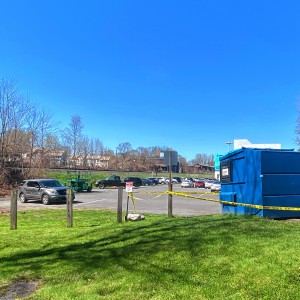 Authorities ID victim in Greenfield slaying
Authorities ID victim in Greenfield slaying  Federal probe targets UMass response to anti-Arab incidents
Federal probe targets UMass response to anti-Arab incidents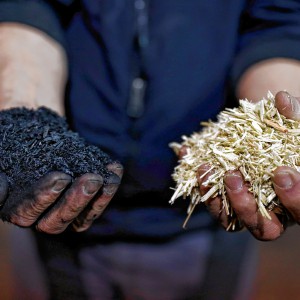 Locking up carbon for good: Easthampton inventor’s CO2 removal system turns biomass into biochar
Locking up carbon for good: Easthampton inventor’s CO2 removal system turns biomass into biochar
